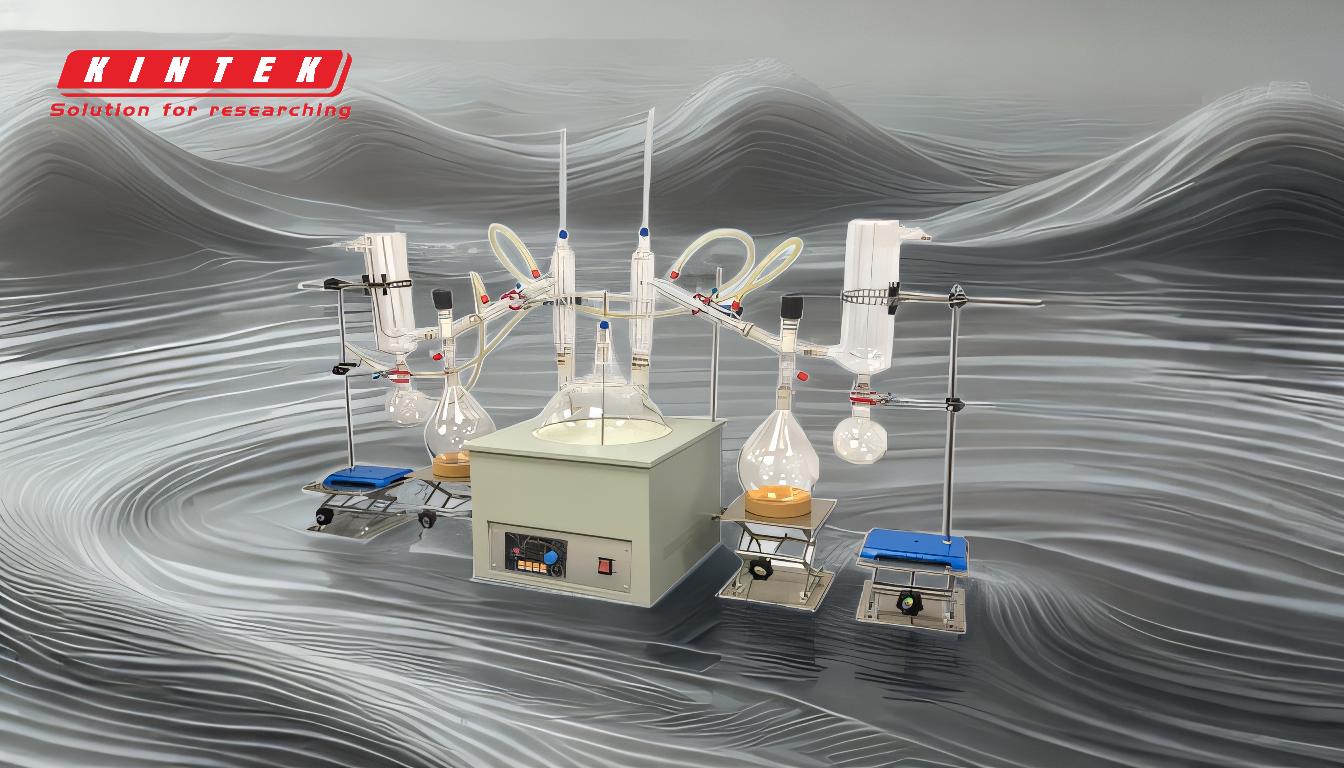To increase the vacuum distillation rate, it is essential to optimize several key factors, including the vacuum level, temperature, feed rate, and system tightness. A lower vacuum level, achieved through a high-performance vacuum pump and proper sealing, enhances distillation efficiency by reducing the boiling point of the material. Temperature control is critical to balancing evaporation rates and material stability. Additionally, thinning the liquid layer and improving liquid flow can significantly enhance the diffusion rate, which is crucial for molecular distillation. Proper optimization of these parameters ensures efficient heat transfer, effective condensation, and high-quality distillate production.
Key Points Explained:

-
Optimize the Vacuum Level:
- The vacuum level is a critical factor in distillation efficiency. A lower vacuum level reduces the boiling point of the material, allowing distillation to occur at lower temperatures, which is particularly important for heat-sensitive compounds.
- Use a high-performance vacuum pump with a lower vacuum limit to achieve the desired vacuum level. Ensure the system's tightness by using high-quality sealing rings and vacuum tubes made from durable materials like PTFE, which offer better wear and corrosion resistance than rubber.
- Implement a vacuum controller or valve to precisely control and maintain the system vacuum value, preventing issues like explosion boiling and ensuring consistent performance.
-
Control and Optimize Temperature:
- Temperature plays a dual role in distillation: higher temperatures increase the evaporation rate but may also degrade heat-sensitive materials. Therefore, it is crucial to select an economical and reasonable distillation temperature based on the thermal stability of the material.
- Use precise temperature control systems to maintain the optimal temperature range, ensuring efficient evaporation without compromising the quality of the distillate.
-
Adjust the Feed Rate:
- The feed rate directly impacts the thickness of the liquid layer and the overall distillation efficiency. A slower feed rate can help thin the liquid layer, improving the diffusion rate and enhancing the evaporation process.
- Optimize the feed rate to ensure a balance between throughput and distillation efficiency. This is particularly important in wiped film distillation, where the feed rate affects heat transfer and condensation.
-
Enhance Liquid Layer Flow and Thin the Liquid Layer:
- In molecular distillation, the diffusion rate in the liquid phase is a controlling factor for the distillation rate. Thinning the liquid layer and enhancing its flow can significantly improve the evaporation rate.
- Use equipment designs that promote efficient liquid flow, such as wiped film evaporators, which mechanically spread the liquid into a thin film, increasing the surface area for evaporation.
-
Ensure System Tightness and Component Quality:
- The tightness of the distillation system is crucial for maintaining the desired vacuum level. Any leaks can compromise the vacuum and reduce distillation efficiency.
- Use high-quality components, such as PTFE sealing rings and vacuum tubes, to ensure system integrity and longevity. Regularly inspect and maintain these components to prevent wear and tear.
-
Balance Equipment Pressure Resistance and Distillation Efficiency:
- The vacuum value must be carefully balanced with the pressure resistance of the equipment. Excessive vacuum levels can strain the equipment, while insufficient vacuum levels can reduce distillation efficiency.
- Select equipment with appropriate pressure resistance and ensure that the vacuum level is optimized for both efficiency and equipment safety.
By addressing these key points, you can significantly increase the vacuum distillation rate while maintaining the quality and efficiency of the distillation process.
Summary Table:
| Key Factor | Optimization Tips |
|---|---|
| Vacuum Level | Use high-performance pumps, PTFE seals, and vacuum controllers for precise control. |
| Temperature Control | Balance evaporation rates with material stability using precise control systems. |
| Feed Rate | Adjust to thin the liquid layer, improving diffusion and evaporation efficiency. |
| Liquid Layer Flow | Use wiped film evaporators to enhance flow and increase surface area for evaporation. |
| System Tightness | Ensure tight seals with PTFE components and regular maintenance to prevent leaks. |
| Pressure Resistance | Balance vacuum levels with equipment pressure resistance for safety and efficiency. |
Boost your distillation efficiency today—contact our experts for tailored solutions!












